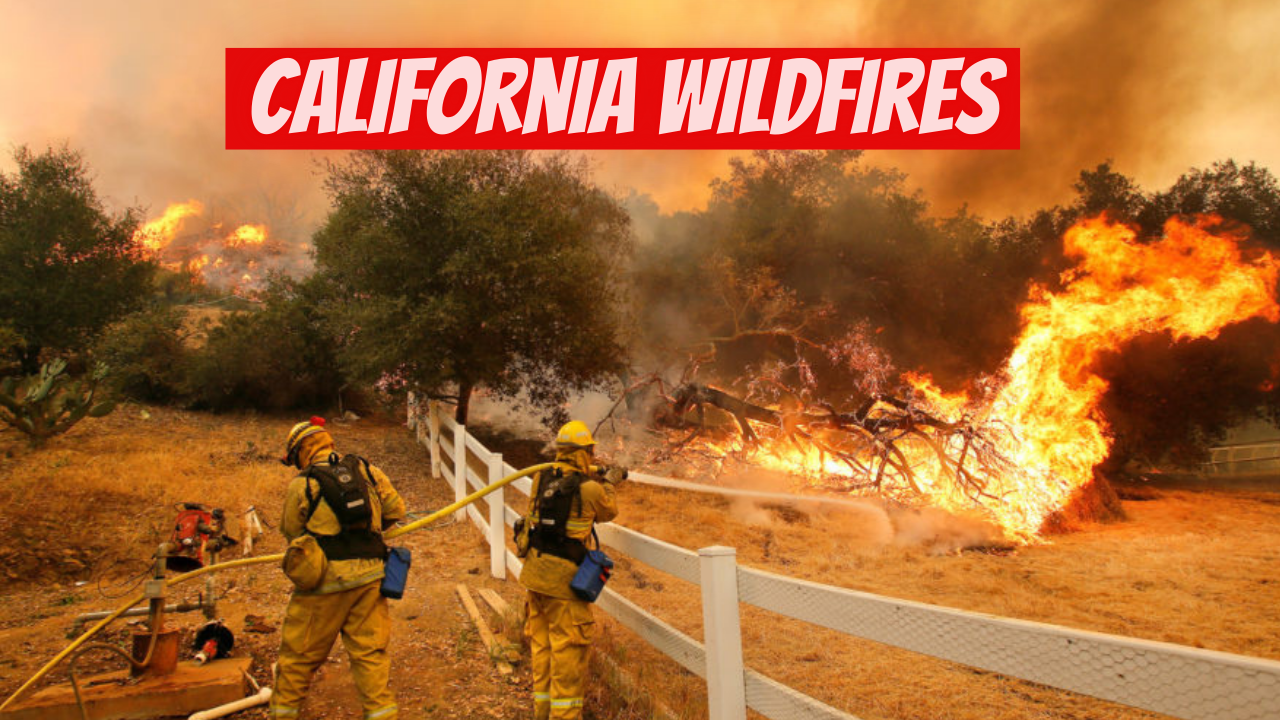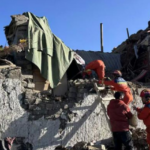<iframe src="https://bwidget.crictimes.org/" style="width:100%;min-height: 250px;" frameborder="0" scrolling="yes"></iframe>
California Wildfires: Political Tension, Climate Change, and Heartbreak

As thousands of lives have been impacted, countless homes have been burned, and sad accounts of death and destruction have surfaced, the terrible wildfires in California have once again drawn national and international attention. According to accounts, these wildfires have killed more than a thousand people so far, and many more have not been provided for or displaced. In addition to raising concerns about the escalating climate issue, the flames started up political discussions, especially between Governor Newsom of California and President-elect Donald Trump.
California Wildfires: A Growing Danger
Because of its dusty climate, high winds, and huge forest cover, California has always been at risk for wildfires. However, in recent years, these flames have become far more frequent and intense. Experts blame this increase on a number of causes, such as forest management techniques, development into fire-prone areas, and climate change.
Large swaths of Los Angeles and neighboring areas have been consumed by flames in the most recent spate of wildfires. Families have had to leave everything they possess behind and travel with little warning. Although firefighters have been working nonstop to limit the infernos, their duty has been extremely challenging due to the dry conditions and strong winds. The state’s air quality is increasing to dangerous levels, and entire areas have been replaced by flames.
California Wildfires: The Human Cost
These wildfires have claimed a huge variety of lives. There have been more than 1,000 fatalities and countless unaccounted-for cases. Survivors share horrific tales of losing loved ones, running from flames that were spreading faster than they could run, and dealing with the overwhelming sadness and uncertainty they currently experience. Relief groups are finding it difficult to help those impacted, and emergency shelters are overcrowded.
It is impossible to quantify the psychological effects of these crises beyond the immediate damage to life and property. Long-term trauma, anxiety, and despair are common among survivors. Communities as a whole struggle with losing their homes, means of basic needs, and sense of safety.
Wildfires and Climate Change
For years, scientists have warned that wildfires will become more frequent and severe due to climate change. Reduced snowfall, extended droughts, and rising temperatures all lead to drier woods, which makes it easier for wildfires to spread quickly. The recent flames serve as a sobering reminder that these forecasts have come true.
With aggressive targets for cutting greenhouse gas emissions and switching to green power, California has been leading the charge in the fight against climate change. Nevertheless, political opposition to these programs is frequently encountered at both the state and federal levels.
The Game of Political Blame
The wildfires have turned into a political hot spot as well. Using the crisis, President-elect Donald Trump has brought up a long-standing policy issue with Governor Gavin Newsom of California. Trump has frequently attacked California’s forest management policies, saying that the fires are mostly caused by inadequate management. He recently stated, “California has to manage its forests more effectively. They miss the fundamentals because they are consumed with other matters.
Trump’s criticisms, however, have been considered misleading by experts. Although forest management plays a significant role in preventing wildfires, the federal government is primarily in charge of maintaining most of California’s forests because they are federally owned. Moreover, forest management is not the only problem with wildfires. Numerous interrelated elements, such as natural weather patterns, urban planning, and climate change, have an impact on them.
Governor Newsom has refuted Trump’s assertions, highlighting how climate change exacerbates wildfires. At a recent news briefing, Newsom declared, “This is a climate damn emergency.” “Instead of merely assigning blame, we must address the underlying causes of these crises.”
The Federal and State Governments’ Roles
Trump and Newsom’s argument brings to light a larger problem: the need for federal and state governments to work together to address wildfire dangers. Funding, resources, and regulations that consider the reality of a changing climate are necessary for effective wildfire management.
for the prevention and response to wildfires. This entails making investments in cutting-edge firefighting equipment, encouraging reforestation initiatives, and enhancing fire-resistant infrastructure. State governments also have a duty to play, especially when it comes to enforcing more stringent building regulations, encouraging landscaping that is robust to fire, and educating the public about fire safety.
Coming Around
As California fights these deadly flames, it is apparent that quick action is required to stop future tragedies. This comprises:Putting Money Into Fire Prevention: Forest thinning and controlled burn programs can help cut down on the amount of fuel that wildfires can use. To reduce the impact on the environment, these techniques must be performed carefully.
Addressing Climate Change: Two essential actions to lessen the lingering impacts of climate change are cutting greenhouse gas emissions and switching to renewable energy.
Improving Emergency Response: It is possible to prevent fatalities and minimize damage by improving early warning systems, increasing firefighter budgets, and making sure that evacuation and relief activities have enough resources.
Enhancing Cooperation: To create all-encompassing plans for wildfire response and prevention, federal, state, and local agencies must collaborate.
Assisting survivors: Community recovery depends on offering long-term housing options, mental health care, and financial assistance to individuals impacted by wildfires.
The wildfires in California are an alarming sign of the problems caused by climate change and the pressing need for action. Although the discussion between Governor Gavin Newsom and President-elect Donald Trump reveals different strategies for dealing with these issues, it is evident that a concerted effort is required to safeguard people, property, and our planet. It is hoped that such events will lead to significant change and a renewed dedication to catastrophe prevention as towns throughout California start the drawn-out process of recovery.Read Also




